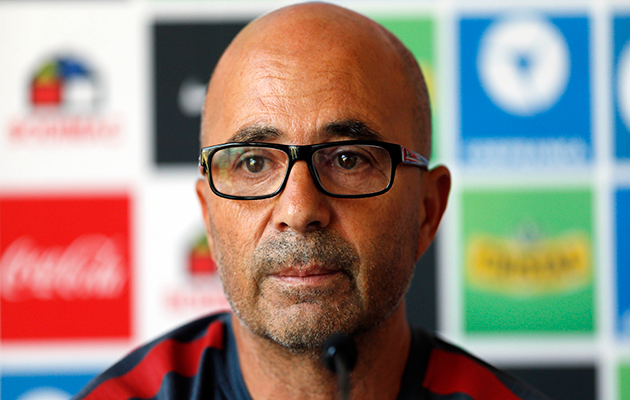Tim Vickery’s Notes from South America
Jorge Sampaoli coached Chile to their first ever serious silverware – the Copa America title in 2015. But he was quick to confess that much of the hard work had taken place before he took command.
Sampaoli inherited both a group of players and an identity of play chosen and implanted by his mentor, Marcelo Bielsa. By the time Sampaoli took over, the generation of Alexis Sanchez and Arturo Vidal were at their peak and at home with Sampaoli’s system.
The coach’s situation with Argentina is radically different. Sampaoli was appointed in the middle of last year with the alarm bells ringing. Argentina were in real danger of not qualifying for the World Cup. Panic stations was problem number one – there was no time to experiment or gently ease his way in. Results were a priority from day one.
The other problem remains even after qualification has been assured. Do Argentina have the players to operate in the way that Sampaoli wants?
There has been plenty of nervy chopping and changing already. The coach’s initial plan was to bring in Mauro Icardi and Paulo Dybala alongside Lionel Messi. It was, frankly, a disaster, with the new men all but completely anonymous. But this is a case of swapping names, and Argentina are rich in attacking resources; Icardi may be out of the picture, but Sergio Aguero, Gonzalo Higuain or new kid on the block Lautaro Martinez are all viable candidates for the centre forward position.
The bigger problems are structural. How should the team line up? What should the base formation be? And with some 80 days to go until the World Cup, the answers to these important questions are not entirely clear.
Sampaoli always wants to press high, strangle the opposition in their own half and create two against one situations down the flanks. His preference has been for a back three. But, given the paucity of Argentina’s current defensive resources, it has not looked solid – and collapsed entirely in a friendly against Nigeria (World Cup group opponents) played last November.
The midfield did not press consistently – exposing the lack of pace in the back line, who dropped ever deeper. This in turn exposed defensive deficiencies down the flanks; in the absence of good wing backs, Sampaoli used wingers for the role, expecting them to charge back 80 metres and defend at the end of it. With problem piling upon problem, Argentina let a two goal lead slip and turned into a rabble, losing 4-2 to the Nigerians.
The coach, then, was forced into a rethink. And so, last Friday against Italy, Argentina lined up with an orthodox back four. A 2-0 win might seem to suggest that everything went alright on the night. Indeed, there were positive aspects; the midfield stayed more compact, and at times managed to press together. One of Argentina’s goals came from winning possession in the Italy half.
But the fact that debutant goalkeeper Willy Caballero was appointed man of the match by much of the Argentine media indicates that not everything went according to plan. In came two new full backs, Fabian Bustos on the right and Nicolas Tagliafico on the left.
Bustos is quick, with a neat line in forward bursts and low pull backs to the edge of the opposition area. But the defensive side of his game is weak. Tagliafico is a lanky figure whose lack of pace off the mark can be exposed.
Does Sampaoli have another look at the full back pair on Tuesday against Spain? A more cautious alternative on the right would be Gabriel Mercado, who worked with Sampaoli at Sevilla. On the left the coach could have a look at Marcos Acuna of Sporting Lisbon, in reality much more of an attacking midfielder than a full back.
Whatever options settled on by Sampaoli, there is a glaring contrast in Tuesday’s game. Spain have one of the most well defined identities in national team football. They are fine tuning and ticking over. Argentina, meanwhile, with less than three months to go until the big kick off, are still in a phase of tests.
Don’t forget to follow World Soccer on Facebook and Twitter.







